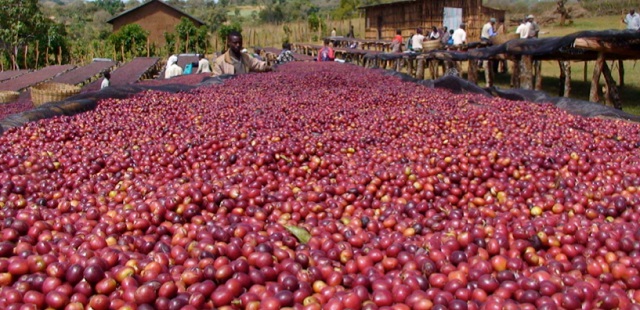
The measures
To stimulate the economy, the government appears to favour intervening from the supply side. So it has waived interest and tax arrears accumulated by businesses before July 01, 2020. It has also deferred their payment of Pay As You Earn until September and offered to expedite payment of outstanding Value Added Tax (VAT) refunds worth Shs120.53 billion. Finally, it is offering to pay businesses that supplied it goods and services arrears worth Shs673billion.
That is welcome relief and good money (if it comes). But how does it encourage businesses to invest and produce? Most experts say only demand by consumers can do that, especially in periods of uncertainty when businesses are most afraid to invest.
Ssempijja, the team leader at EY says the government’s decision to waive interest on tax arrears as well as defer payment of Pay As You Earn till September is not a solution to many people/businesses struggling because that period, he said, is too short and that the burden will be too much for them to meet the pending and new tax obligations.
He also said Uganda should have thought of reducing corporation tax currently at 30% to maybe Kenya’s 25% to attract foreign direct investment.
That is possibly why Kenya, for instance, has waived Pay As You Earn tax for workers and not business. Employees earning less than Ksh24,000 or Shs 864,000 will now have more cash to spend. Companies that want that money have no choice but to pump up production.
The Kasaija budget also proposes that companies unable to pay their loans can take advantage of loan restructuring offers of up to a period of 12 months through the Bank of Uganda. Others can borrow from a Shs1 trillion tranche the government is pumping into Uganda Development Bank for onward lending to businesses. Government plans to invest another Shs138 billion in strategic areas through Uganda Development Corporation (UDC).
The trouble with these offers and measures are not new. They have been recycled so many times most business owners cannot plan on them.
The same uncertainty lingers over proposed measures to give an additional Shs300 billion immediately to boost agricultural production and productivity. The money would go to seedlings, fertilizers, irrigation, storage facilities and value addition processing for coffee, cotton, tea, palm oil and other oil seeds. Cassava, maize, cocoa and dairy, beef, and fish production could also benefit.
But doubts double when the government talks of securing funding for the development of Kampala Industrial Business Park at Namanve and for power transmission and substations for Mbale, Kapeeka, Bweyogerere, Kasese, Soroti, Luzira, Jinja and Mbarara industrial parks. This is a copy and paste job from previous budgets. Same with the offer to boost funding to Uganda Industrial Research Institute (UIRI) for innovation, research and incubation of business start-ups.
Some economic experts say any useful stimulus packages must involve direct injections of money into the economy.
They cite Kenya’s waiver of Pay As You Earn tax to employees earning less than Ksh24,000 or Shs 864,000.
Or even its reduction of corporate income tax rate for resident companies from 30% to 25% on 2020 income and the turnover tax rate from 3% to 1%. Kenya has even cut the penalty for late submission of turnover tax returns by 50% and repealed the pesumptive tax previously payable at 15%.
Many say those are bones businesses can immediately chew on.
Resource envelop
The other main concern is how the government aims to finance the budget and how to spend.
The Resource Envelope of Financial year 2020/21 is Shs45.4 trillion (approx. $12billion at current exchange rate). Of this Shs25.5 trillion or 56% would be raised domestically, mainly through taxes by the Uganda Revenue Authority (Shs21.8 trillion). That is an 8% increase from last year in taxes on business laying off workers, cutting salaries, and crying out for waivers over the COVID-19 crisis.
External financing consists of project support of Shs 9.5trilion and general budget support Shs2.9trillion. Domestic re-financing amounts to Shs7.4trillion and appropriation in aid is Shs215billion.
Next financial year’s domestic revenue target is Shs21.8trillion, comprised of tax revenue amounting to Shs20.2trillion and non-tax revenue of Shs1.5trillion, which translates into a revenue effort of 14.3% of GDP.
Experts like Sempijja say the planned revenue target appears to be ambitious given that the economy is struggling due to coronavirus lockdown measures.
But Kasaija calls these “modest adjustments in some taxes”.
The modest adjustments even touch on the sensitive excise duty rate on fuel.
Kasaija says this will support enhanced economic recovery and maintain an acceptable level of social welfare. How, when companies close and unemployment rises?
In fact Kasaija anticipates resistance and says “tax administration will be strengthened” to improve efficiency in revenue collection, close loopholes, and revenue leakage.
Even local governments will roll out the digital collection of fees and rates.
 The Independent Uganda: You get the Truth we Pay the Price
The Independent Uganda: You get the Truth we Pay the Price



Ok for all the nation